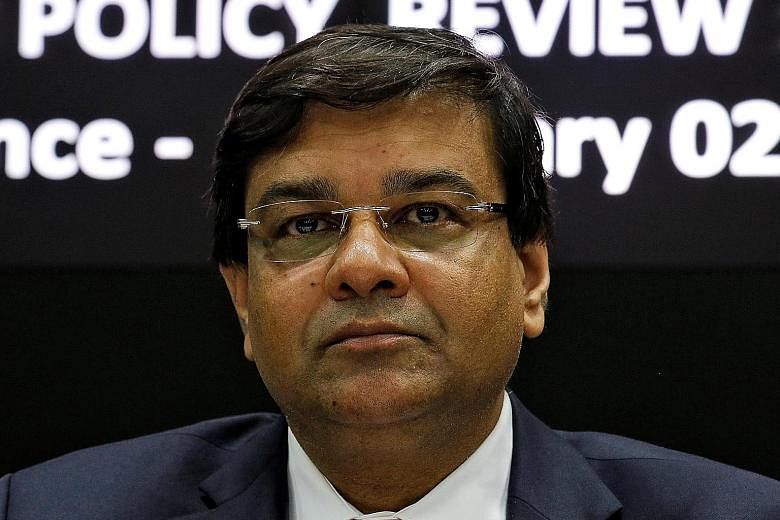NEW DELHI/MUMBAI • India's government has promoted Dr Urjit Patel, a deputy governor in charge of monetary policy at the Reserve Bank of India (RBI), to serve as its next governor for a three-year term.
He will replace Mr Raghuram Rajan, a former International Monetary Fund chief economist who stunned markets in June by announcing he would step down in September and return to academia after a single three-year term at the RBI.
Dr Patel, 52, headed a panel that recommended landmark changes to monetary policy in India, including a switch to inflation targeting and the creation of a panel to set interest rates. He will start his three-year term on Sept 4.
"The Appointments Committee of Cabinet has approved the appointment of Dr. Urjit R. Patel as Governor, Reserve Bank of India for a period of three years," said a statement from the government.
Dr Patel, who has a doctorate from Yale, had been widely seen as ensuring the most continuity among the candidates believed to be in the running for the top job. He had been reappointed in January for another three years as deputy governor in charge of monetary policy, a department he has run since 2013. Seen as a close lieutenant to Mr Rajan, Dr Patel will get to implement the policies he had helped shape.
The government is soon expected to announce the composition of a six-member monetary policy committee to rule on interest rates. It will be made up of Dr Patel and two other RBI officials, along with three members appointed by the government.
Mr Rajan, who succeeded in halving the inflation rate from the double-digit levels prevailing when he took over, also persuaded the government to adopt inflation targeting, setting a medium-term central target of 4 per cent within a range of 2 per cent to 6 per cent - another policy endorsed by Dr Patel.
The new governor takes over at a time when inflation has burst out of the top end of that range. Consumer inflation accelerated to 6.07 per cent in July, the fourth consecutive month it has stayed above the RBI's near-term target of 5 per cent by March.
Aside from controlling inflation, the new governor will have to follow through on efforts to clean up banks' bad loans so that they can once again support the investments needed if India is to keep its place as one of the world's fastest-growing economies.
Dr Patel will also have to navigate India's tricky political scene. Right-wing members of the ruling Bharatiya Janata Party had criticised Mr Rajan for some of his speeches on economic matters and for not cutting interest rates faster.
The chief of the RBI is typically chosen by the prime minister in consultation with the Finance Ministry, making Dr Patel the first governor to be chosen by Prime Minister Narendra Modi.
REUTERS, AGENCE FRANCE-PRESSE

